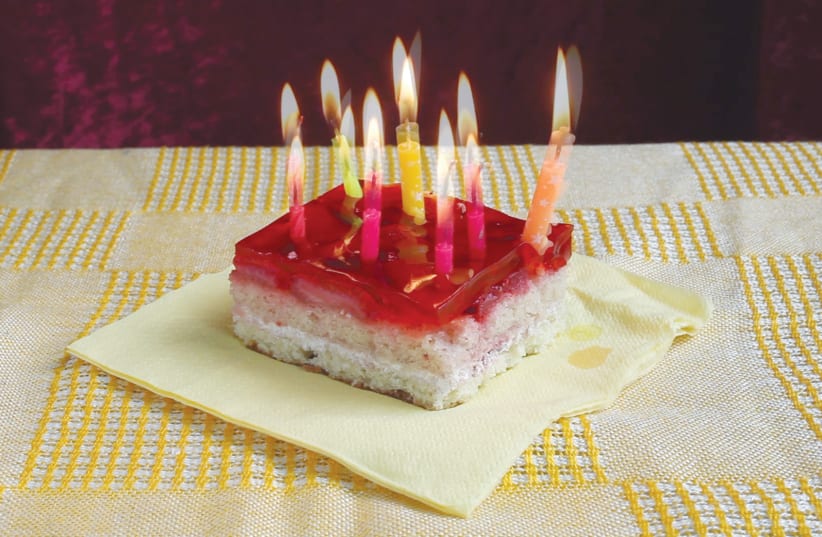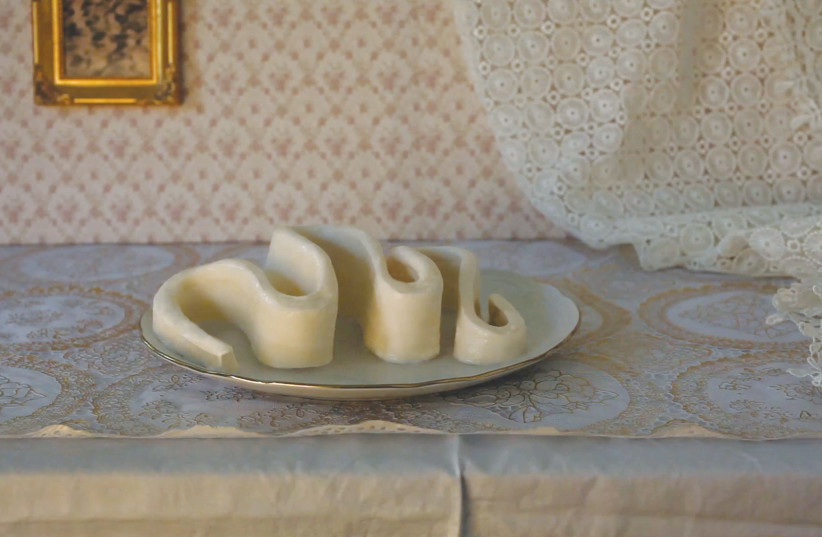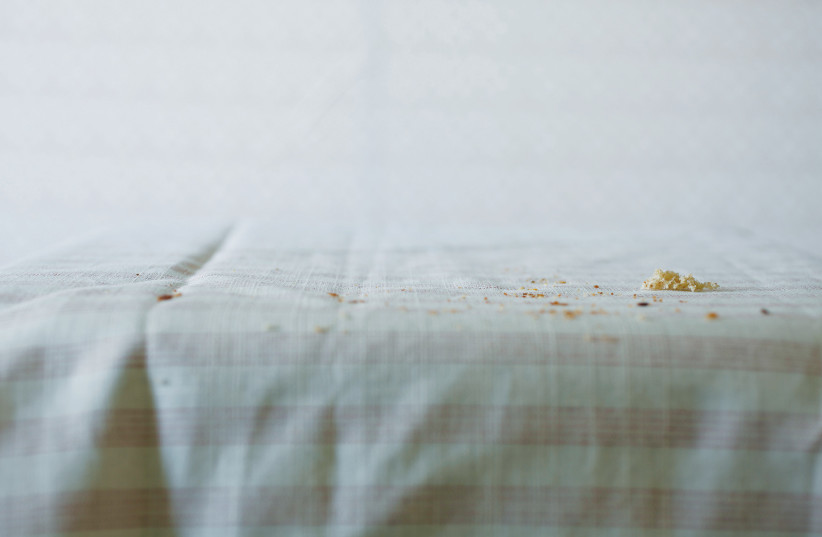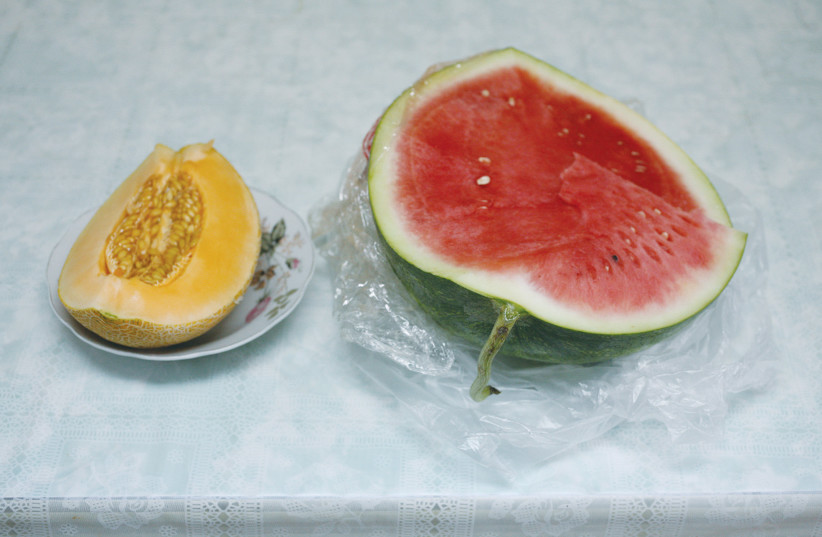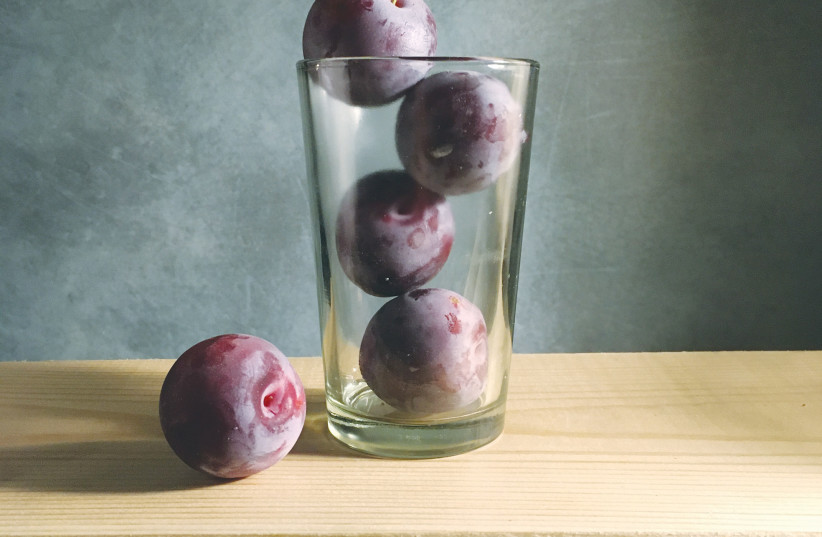When I was a kid, several eons ago, there was a book of Jewish jokes in our house. If memory serves, the title ran something along the lines of: “You Don’t Have to Be Jewish to Enjoy Jewish Humor.” That was followed by the tongue-in-cheek caveat “but it helps.” The same adage could be tailored to suit the vittles we consume.
Jewish food, of a variety of ilks, textures and colors, is the fundamental theme of the “What’s Cooking?” exhibition currently up and running at The Social Gallery of The Naggar School of Art and Society, at Canada House in Musrara.
Naturally, there is much more to the tasty offerings than meets the eye, or the palate. The pretext for the show harks back to 1999, when the same arts vehicle put out a book with an impossibly long-worded title that begins with: “Place everything in a pan on a high flame.” The following lines read like something out of the Method section of some recipe. “That’s exactly what it is,” says curator Ayelet Hashahar Cohen. “That’s the cover of a book which came out 22 years ago, in 1999.”
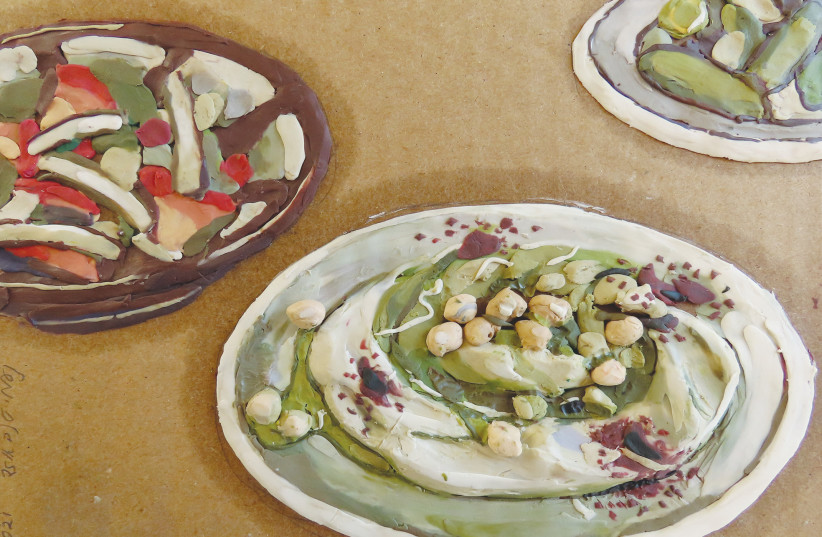
The idea back then was to collate recipes from local residents, reflecting their personal-ethnic baggage and the flavors and scents they grew up with and brought with them to Musrara. It is a valuable piece of history, and testament to the definitive melting pot backdrop to the neighborhood. “This man lived here but he has passed on now. And that’s his daughter. She also died,” Cohen explains pointing to a couple of the tetraptych shots of double spreads taken from the book, each of which features a recipe and a photograph of the then local resident who proffered the information. In strict geographical terms there is one interloper. “That’s from Ikermawi Humus which is right here, on the borders of the neighborhood,” Cohen notes. “That’s a bit outside the area, but it’s really close,” she adds with a chuckle. Having picked up a tubful of the delicious chickpea paste on numerous occasions over the past two-plus decades I can vouch for its proximity, and relevance to the exhibition.
All told, the show incorporates works by eight artists, from a wide range of cultural provenances, across the Ashkenazi-Sephardic divide. And not all have a natural DNA link with the host district, although they can all identify strongly with the ethnic mosaic layout. “I grew up in Kiryat Hayovel, which is very similar to Musrara,” notes Einat Arif-Galanti. “It is a fusion of so many different kinds of people, with all sorts of roots – like Musrara.” She references a number by one of our stellar rock musicians, albeit with a strong ethnic slant. “It is like the song by Beri Sacharof, ‘Kama Yossi’ (So Many Yossis),” she laughs. The lyrics of the song include lines such as: “Romanians, Moroccans, Poles mixed up in the sands.” Sacharof also gets into the Musrara mood, with some tidbit mentions. “Lots of pickled cucumber. Lots of bread with halva.”
The photographer has her fair share of cultural diversity in her own bio, much of which informs her exhibits in Musrara. “It is exactly the same story,” she says. “My father was born in Germany, in a DP camp, and then grew up in [multicultural] Lod. There is some dissonance there too,” she laughs. Lod, at the time, was largely inhabited by Arabs and Sephardic Jews.
There’s a lot more to Arif-Galanti’s familial ethnically-infused lineage. “My dad has stories about being sent to live in a mixed neighborhood, and living with everyone regardless of where they originally came from. He talks about the different kinds of food they all ate, and I identify with that strongly.” Food, she notes, is a powerful memory trigger. “I can remember the smells and flavors of the food my grandmothers made.” One of Arif-Galanti’s grandmas was born in the Ukraine and the other came from Iran. That’s a pretty diverse genealogical spread.
The memories come flooding back, and feature prominently in the exhibition, with their accompanying emotional and personal historical baggage.
For Arif-Galanti, it is just as much about the absence, as the presence, of comestibles. That comes across palpably in a misty-mystical shot of bread crumbs scattered across a tablecloth. “The line of the table level is something that appears a lot in my work,” she notes. That brings the viewer right into the beating heart of the subject matter, and eyeball to eyeball with the principal camera target.
THERE IS an emotive family tale behind the Crumbs work. “In around 1947-1948 my aunt relates that she went home and she told her mother (Arif-Galanti’s Persian-born grandmother) she was hungry and asked if there was anything to eat. Her mum told her there wasn’t anything to eat.” The kid was not to be denied. “My aunt went over to the bread bin, opened it and said to my grandmother: ‘Look! There is food here! There are breadcrumbs!’ That story has stayed with me over the years.”
That highly evocative family nugget continues to inform Arif-Galanti’s thinking in adult life, and her approach to her art. “I’ve asked my aunt to relate that story several times. There is such an important lesson in there, for me. It doesn’t matter where you are from, what you can see. The important thing is to focus solely on what there is, and not bother with what there isn’t.” As the Ethics of the Fathers sagely posits: “Who is rich? One who is happy with his lot.”
Arif-Galanti takes the level playing field approach, on a physical and conceptual level. “Looking at the tabletop, you see the crumbs. You see what is really important.” Sounds like a good tenet for life in general.
Another frame at Canada House shows a white tablecloth against a whitish back wall, which only serves to train the observer’s eye on the other hues there – a blue-tinted glass vase and, more importantly, the mallow stalks and leaves protruding from the glass receptacle. The vegetable detritus dotted across the tablecloth naturally evokes the Crumbs image, both in simple visual terms, and also in relation to the sociological subtext. “My Persian grandmother always had some green leaves on the table,” Arif-Galanti recalls. “There might be nana (mint) or parsley, or some other suchlike. She died when I was only six years old, but I remember her very well, and the smells and flavors of the food she made.” Back in the day when edibles in these parts were scarce, in the wake of the War of Independence, many had to make do without certain staples, while there were those who knew how to make bread from mallow plants.
That, the photographer feels, has broader societal and existential import. “For me, mallow signifies a sense of compassion, of hope, and the ability to see the positive side to everything.” Amen to that.
It seems Arif-Galanti’s forebear was out to do good for one and all, in ecological areas too. “She always reused plastic bags,” she says. “And that’s long before people started talking about global warming and all that.” That suits the aforementioned making do – nay, being happy – with what you have approach. “That is a fundamental element of being environmentally friendly – trying not to waste anything. That is something I try to convey through my work.”
Arif-Galanti’s contribution to “What’s Cooking?” takes in a couple of video works, including a compelling five-minute looped screening of a delectable gilt-plated shallow bowl with an off-white porridge-like substance which transforms from a wavy structure into a thick marshy substance which gradually spills out onto the tablecloth. The name of the work, Melting Curve, imparts something of the dynamics and also, naturally, infers the melting pot concept.
The photographer is also sending out a nod in the direction of one of the mainstays of the Israeli artistic canon. This is a critical reimagining of Itzhak Danziger’s monumental 1970s Akalton (Serpent) sculpture in the Yehoshua Gardens area of Hayarkon Park in Tel Aviv. “For me, Danziger represents a sort of new Israeli identity, a clean mindset which does not look back. There is no nostalgia there.” Even so, despite the sheer volume of the sculpture and the use of sterile-looking concrete, Arif-Galanti finds a softer side to the creation. “He still has curves in there. There is some hint of tenderness.”
Arif-Galanti took that and ran with it. The video is largely blurry, with the wallpaper background out of focus, offering what she calls “variations on the kitsch of the original elements.” She talks about “soft kitsch,” and taking a “sympathetic viewpoint.”
Sympathy, and empathy, abound elsewhere across the exhibition as, for example, Yoram Bouzaglo deftly raises the specter of his childhood with a couple of sensual pictures, one of a bunch of golden quinces, and another of plums sashaying their way up a glass. Another Bouzaglo frame shows his late mother, Shula, peeling peaches, underscoring his personal and nutritional bond with Musrara.
Nomi Tannhauser references a bunch of familial hooks with a Plasticine three-parter that recreates some topical cuisine, including some finger-licking looking jam tarts, tastefully arranged in an Armenian bowl. And, if you are after crockery there is plenty on offer in Uri Bareket’s quirky Musrara alleyway layout, and some more in the way of street level life in his offbeat 3-minute “Television” video. And Itai Nadav’s shots of the innards of students’ fridges bring us right up to speed, in the here and now.
Bete’avon.
What’s Cooking? closes on November 15.
For more information: (02) 628-6519 and www.musrara.co.il/galleries
